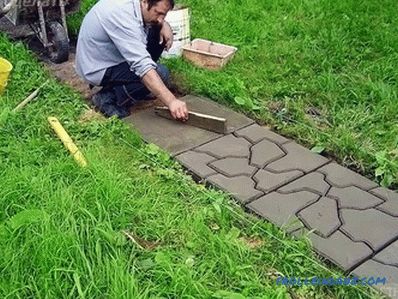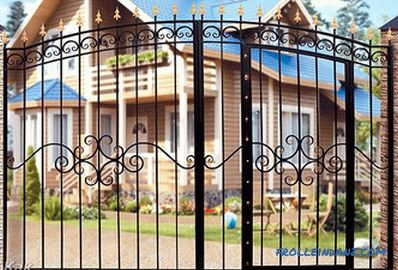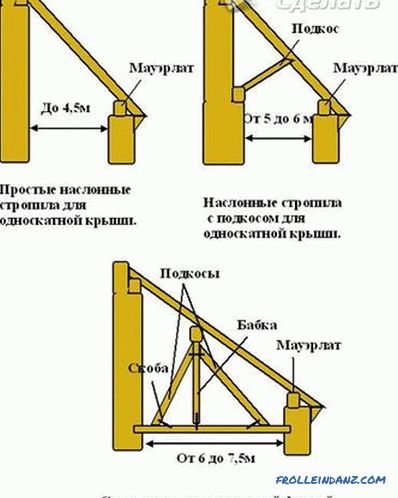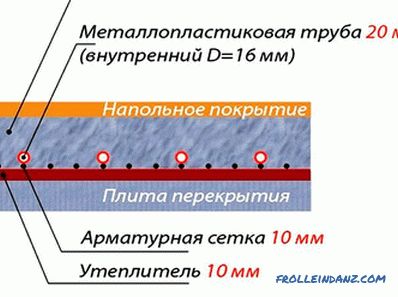The self-styled tablecloth admired fairy-tale heroes not only with the ability to instantly fix the dishes with the dishes, but also to quickly remove all the dirty dishes - for this, the tablecloth simply folded. Although the manufacturers of ovens could not fully replicate this "technology", they still made life easier for customers of their products by introducing various cleaning methods into the design of the ovens.
Pyrolytic, catalytic or hydrolytic are the most common and now, choosing an oven, you also have to decide which oven cleaning is better, because each of the methods has its advantages and disadvantages.
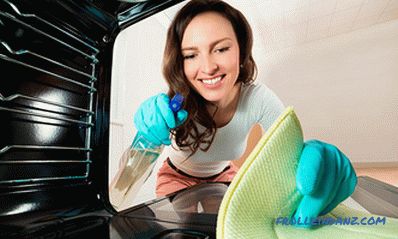
Pyrolytic cleaning of the oven
The term "pyrolysis" in scientific language is defined as the thermal separation of organic and inorganic chemical compounds, resulting in ash and gaseous compounds. This term consists of two ancient Greek words: Pyr (πῦρ) - fire, heat, bonfire and Lysis (λύσις) - disintegration, decomposition, separation. In simple terms, the essence of pyrolytic cleaning means the burning of any contamination that could have formed on the walls of the oven.
The pyrolysis method is still the most perfect of all existing, and the oven equipped with such functionality can be safely attributed to the Mercedes class among ovens. The fact is that the use of elevated temperature automatically means the use of more durable and resistant materials.
Every housewife knows that the preparation of the main mass of baking requires a temperature of 180-250 ° C, which means that the pyrolysis should be carried out at much higher values, for which standard ovens are simply not designed. Basically, the majority of pyrolytic reactions take place at a temperature of about 500 ° C, although some oven manufacturers were able to “make” this function to work at 300 ° C, but this is not pure pyrolysis, but only part of a multi-level cleaning system.
Since cleaning is carried out at a high temperature, all such ovens are equipped with additional thermal protection of the door and cabinet so that the outside temperature is as low as possible. They also have a locking mechanism that prevents the doors from opening until the inside temperature is above two hundred degrees.
Carrying out the cleaning itself should not cause any difficulties for anyone: all the trays are removed from the oven (in some models, you don’t need to do this - the coasters are also made of heat-resistant metal and can be cleaned this way), the door closes and self-cleaning. When the pyrolysis process is completed, you need to wait some time to allow the oven to cool down, after which the resulting ash simply sweep away with a brush or rag.
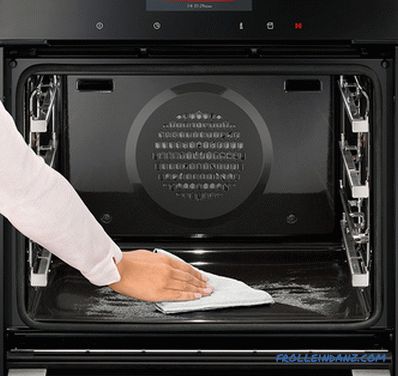

+ Benefits of the pyrolytic cleaning method
- This is in the full sense of the word "self-cleaning oven" without human intervention - all that is required is to start the pyrolysis, and then remove the ashes.
- It is practically impossible to purchase a poor oven with a pyrolysis system - only high-quality crucible steel is used for them. Other materials will give out themselves during the warranty period: the oven will simply “lead” - it will change its shape due to thermal expansion.
- The entire inner surface is cleaned, including the most hard-to-reach areas - even if the ash does not fall to the bottom from there, it will simply be blown out.

- Disadvantages of the pyrolytic cleaning method
- The use of quality materials increases the cost proportionally oven.
- Cleaning is done separately from cooking. This means a waste of time and additional power consumption.
- The power of ovens with a pyrolysis system is higher than usual, so for it, in any case, you will have to maintain a separate line, calculated for at least 6 kW.
- During pyrolysis, a large amount of gaseous decomposition products is formed, which requires a good ventilation system to remove.
- Despite the high-quality thermal protection, the surface of the oven and the door itself heats up quite strongly. Although their temperature does not exceed 70-80 ° C, this is quite enough to burn, especially a child. Therefore, it is desirable that during the pyrolysis cleaning of the oven in the kitchen there was no one.
Catalytic cleaning of the oven
This method combines the effectiveness of the technology used and the cost of its use. It has received wide distribution, since it does not require serious complication of the design of ovens, and at the same time produces a fairly good result.
The whole secret lies in the composition of the enamel covering the walls of the oven, which contains a catalyst - an active ingredient that decomposes fats into soot and water at temperatures from 150 ° C and above.This means that the cleaning process takes place automatically, right during cooking. The oven equipped with a catalytic cleaning system is quite easy to recognize by running a hand inside the heating chamber - on its surface panels are coated with enamel that is rough to the touch.
Actually, this is the principle of the catalytic cleaning method - when fat is sprayed inside the oven during cooking, it gets on the panel and lingers on their rough surface. Since the surface of the oven is already heated to the desired temperature, the catalytic reaction begins, which ends even during this cooking or will be continued at the next. Some manufacturers build several cleaning modes into the ovens - after cooking, you can turn on the additional one at elevated temperatures.
In terms of efficiency, there is no doubt which type of oven cleaning is better - catalytic is clearly inferior to pyrolysis, but it is cheaper and in any case greatly simplifies the task of maintaining the cleanliness of the oven. In addition, manufacturers are constantly improving the materials used and the latest catalytic cleaning systems have a much greater work resource and require less human involvement in cleaning the oven.
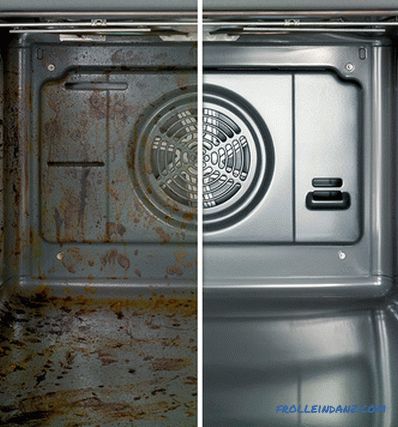

+ Advantages of the catalytic cleaning method
- The cleaning process itself goes unnoticed - it starts automatically while the oven is running.
- The cost of ovens with a catalytic cleaning method is within the golden mean and they are quite accessible to the average user.
- Long service life of panels with catalytic enamel - even with intensive use, they last for 5 years. In addition, you can find double-sided panels, which, after working out on one side, can be turned over and used further.
- Availability of components - when over time you have to replace enamelled panels, they are easy to find: in service centers or shops. Here, if necessary, you can order their installation, if you do not want to perform the replacement yourself.
- This cleaning method can be used in electric and gas ovens.

- Disadvantages of the catalytic purification method
- The catalytic enamel begins to deteriorate during interaction with sugar or milk. Since during cooking, for example, baking, the stuffing may drip from the baking sheets to the bottom of the oven, the panels with the catalyst are fixed only on the side and rear walls.
- Panels with catalytic enamel should not be cleaned with abrasive detergents or hard cloth - they will erase the enamel from the surface.
- Although the enamel panels are durable enough, they will have to be changed after a while.
- In case of severe contamination of the surface, its cleaning will have to be repeated several times.
Hydrolysis cleaning of the oven
Most likely, this simple, but quite effective method of cleaning is a popular invention, because every housewife who had to be washed with dishes dried dirt. The essence of the method in the preliminary softening of fats that fell on the walls of the oven, for which water vapor is used. To do this, simply take one or two containers with water and are installed inside the oven. Then the oven warms up to 50-90 ° С and after 30-40 minutes it will be much easier to clean the greasy stains or the stuffing that dripped to the bottom of the oven.
In fact, the oven manufacturers did not invent a bicycle, but simply made an oven cavity at the bottom where they could pour water, added a timer for 30-40 minutes and said that such ovens are equipped with a hydrolysis cleaning system. Additionally, for such ovens, they began to sell cleaning products that help to soften fats and burnt dough under the influence of hot steam.
To the credit of the manufacturers, they didn’t stop at this - the cleaning method itself is unlikely to work out, but the enamel for the walls of the ovens is gradually improving. Its acid resistance increases, and its smooth and smooth surface has a molecular structure that prevents fat particles from penetrating into it.
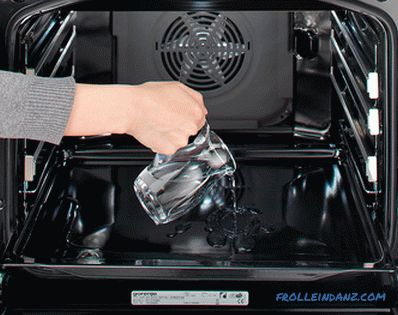

+ Advantages of the hydrolysis purification method
- Maximum efficiency - you need only water and a little detergent. Energy costs are minimal, as there is no need to heat the oven to a high temperature.
- Safety - no overheating and danger of getting burned.
- Despite the simplicity and obviousness of this solution, it significantly increases the cleaning efficiency.

- Disadvantages of the hydrolytic purification method
- You will still have to deal with complex contaminants work hard
- For cleaning, you have to allocate a separate time.At the same time, the oven should be cooled after cooking.
- A method, even with a stretch, cannot be called automatic - rather, it is simply a simplification of manual cleaning.
Comparison of oven cleaning systems
These are all basic ways to keep ovens clean, their principle of operation, advantages and disadvantages. But to decide which type of oven cleaning is better, in each case you will have to independently, depending on the desire to save money when buying the oven, electricity when it is used or the time for cleaning.
Updated: February 3, 2018
